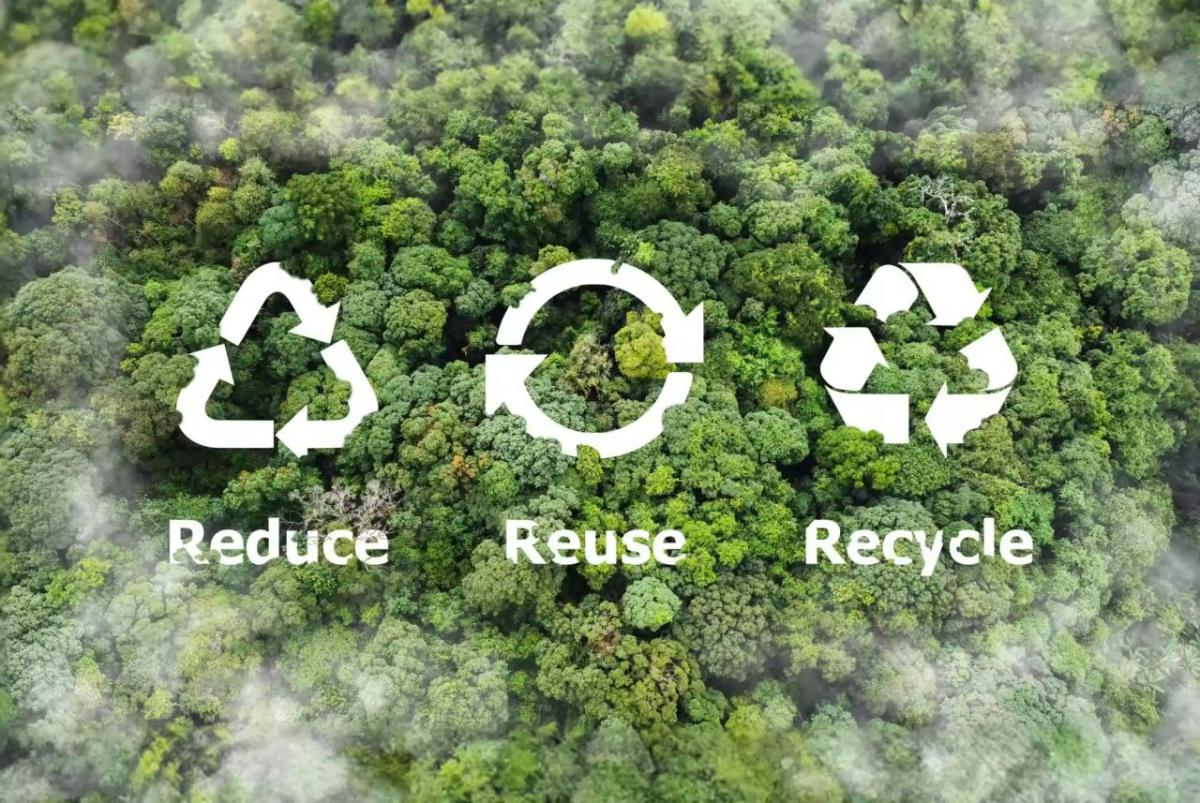Reduce, Reuse, Recycle: Principle No. 1 for Building a Circular Economy
Published 03-20-24
Submitted by Eastman

Eastman takes a principled approach to developing solutions for the circular economy.
In our previous article, “Six principles for the circular economy,” we introduced our approach to evaluating circular technologies. Now, let's delve into our first principle: Reduce, reuse, recycle. This principle forms the foundation of our waste hierarchy strategy. Throughout this series, we'll explore each principle in detail one article at a time.
Principle 1: Reduce, reuse, recycle
Most people are familiar with the three Rs: reduce, reuse, recycle. And while this phrase may be most familiar as a consumer mantra, it’s more important now than ever that companies also adopt the sentiment. We believe in the philosophy that we should reduce, reuse and recycle materials to the fullest extent possible to reduce plastic waste, and we think industries everywhere should start with this familiar “three Rs” concept, aiming for the most resource-efficient solutions for any given material or product.
Reduce
To reduce, in its simplest form, means to use less of. For consumers, that usually means buying fewer brand-new items. But for companies, it’s a little different. To reduce entails using less material per item when possible and designing for recycling.
Ultimately, we need companies to use fewer unrecyclable materials. Fortunately, with advances in recycling, the range of materials that can be recycled has vastly increased, widening the variety of truly recyclable options. Companies should lean into these materials, especially for packaging and single-use items.
We also aim to reduce the production of raw petroleum plastics. When companies commit to materials that are produced from waste plastic through molecular recycling, we can greatly reduce our dependency on fossil-based feedstocks for new plastic production and create a collection process that assigns value to what was otherwise considered ‘waste,’ keeping it out of landfills or the environment.
In addition, companies should consider the growing consumer desire to consume less by investing in quality products that last longer. Companies need to design for durability and longevity and communicate these benefits.
But we won’t move quick enough if these efforts are exclusively voluntary. We’ve proven that already. We’ll move a lot faster when we put policies in place that commit to reducing production of new fossil-based plastics. The technology to move away from raw petroleum-based materials is here now and will only improve in efficiency and financial feasibility as demand grows and policy supports it. We need to make it a baseline through policy and regulation and remove restrictions around sustainable molecular recycling.

Reuse
Single use is no longer a luxury that our planet can afford. Reuse is all about functionality, usability and longevity of usefulness. And although there may be products that will only be used once in their current form — for instance, in healthcare or packaging — they don’t have to head to the landfill. Molecular recycling can help us move from single use to circular use for these items as well. With the right infrastructure and commitments from companies and governments as well as supportive education and messaging, we can reuse the material from single-use products infinitely.
Companies can commit to reuse by designing products to have replaceable parts or reusable pieces or by packaging in refillable containers. They’ll need to design convenient and economical systems so that consumers can easily return products and packaging to the value chain at the end of their usefulness, access repair parts or refill containers. Education is also needed to move the public from seeing materials as waste to seeing them as part of a more sustainable material manufacturing system.
Legislation plays an important role as well. A robust and easy-to-navigate credit system for circular design could incentivize creative solutions and provide resources for future production. Regulations around single-use packaging could make a huge impact on the amount of plastic waste that ends up in the environment and landfills.
For instance, in France, McDonalds is piloting a program that eliminates single-use serving ware for in-restaurant dining and serves their customers with reusable fry holders, drinkware and cutlery. The change was initiated by the French law banning single-use plastics, and customers are responding well, demonstrating that there are some spaces where the move from single-use plastics can be an easy transition and should be immediately adopted.
Recycle
To recycle means to put materials that are at the end of their useful life back into the system to create new products. Companies can commit to recycling in two ways: using recycled content in products and packaging and designing products to be recyclable. But we need system reform and consumers on board too.
Although we have recycling systems in place now, they will need to be adapted to support both mechanical and advanced recycling because a wider range of plastics and fibers can be accepted. Investment in better infrastructure and collection systems would empower both the mechanical and the advanced recycling system to collect more materials, keeping them out of landfills and returning them to the value chain. On top of that, consumers need the education and faith to support the expanding system.
Molecular recycling is not meant to replace mechanical recycling but instead help it fully address the plastic waste crisis. Together, they offer real hope for a more circular world. While mechanical is the most efficient recycling method right now, molecular recycling means plastic doesn’t have to be landfill bound. If it is recovered in the recycling system, all plastics — even currently hard-to-recycle plastics — will become inputs for new products and packaging. This can help us reduce our dependency on fossil-based feedstocks.
“Reduce, reuse, recycle” is an ethically sound foundation for material use, product design and life cycle management. We need companies to put the concept into practice. We need legislation that allows for innovation in advanced recycling and policy and funding for infrastructure that encourages implementation of strategic collection for reuse and recycling.
With strong legislative and corporate commitment, we can foster innovation around advanced recycling to make a more circular future for the materials industry. But “reduce, reuse, recycle” is only the beginning.
Keep reading to learn why material-to-material recycling is integral to creating a circular economy that creates value from material waste.

Eastman
Eastman
Founded in 1920, Eastman is a global specialty materials company that produces a broad range of products found in items people use every day. With the purpose of enhancing the quality of life in a material way, Eastman works with customers to deliver innovative products and solutions while maintaining a commitment to safety and sustainability. The company’s innovation-driven growth model takes advantage of world-class technology platforms, deep customer engagement, and differentiated application development to grow its leading positions in attractive end markets such as transportation, building and construction, and consumables. As a globally inclusive and diverse company, Eastman employs approximately 14,000 people around the world and serves customers in more than 100 countries. The company had 2023 revenue of approximately $9.2 billion and is headquartered in Kingsport, Tennessee, USA.
About Eastman in the circular economy: In 2019, Eastman became the first company to begin commercial-scale chemical recycling for a broad set of waste plastics that would otherwise be landfilled or, worse, wind up in the environment. Eastman's molecular recycling technologies can process waste plastics traditional mechanical recycling methods cannot—including polyesters, polypropylene, polyethylene, and polystyrene—derived from a variety of sources, including single-use plastics, textiles, and carpet. These technologies provide a true circular solution of endless recycling for materials, allowing them to be reused repeatedly.
To learn more about how we’re working to make a more circular economy visit eastman.eco.
More from Eastman

